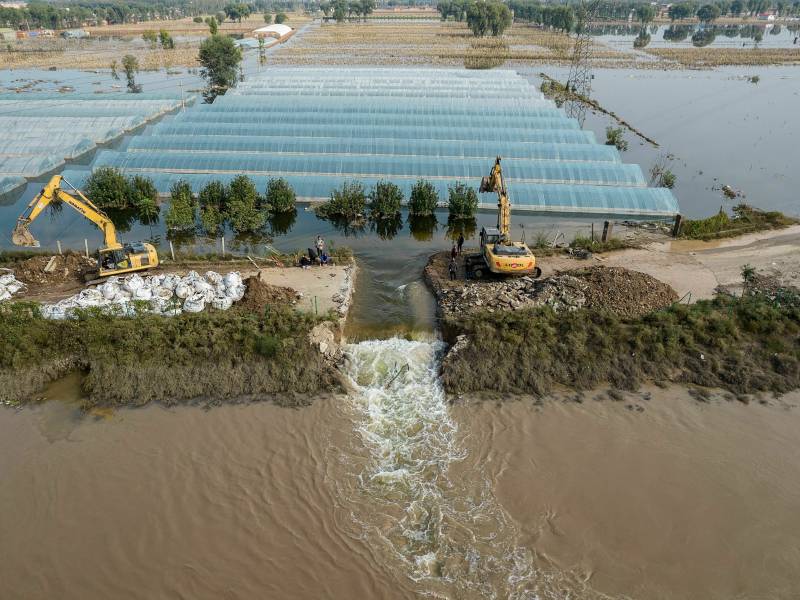Climate change is causing the weather around the world to get more extreme, and scientists are increasingly able to pinpoint exactly how the weather is changing as the Earth heats up.
A sweeping new report by top climate scientists and meteorologists describes how climate change drove unprecedented heat waves, floods and droughts in recent years. The annual report from the American Meteorological Society (AMS) compiles the leading science about the role of climate change in extreme weather.
“It’s a reminder that the risk of extreme events is growing, and they’re affecting every corner of the world,” says Sarah Kapnick, the chief scientist at the National Oceanographic and Atmospheric Administration (NOAA).
The Earth is already about 2 degrees Fahrenheit hotter than it was in the late 1800s, and scientists warn that humans must cut greenhouse gas emissions in half this decade to avoid catastrophic warming later this century.
One way to understand and predict the effects of a hotter Earth is to look for the fingerprints of climate change on extreme weather events such as floods, heat waves and droughts. The last decade has seen huge leaps forward for the field known as extreme-event attribution science, which uses statistics and climate models to detect global warming’s impact on weather disasters. The extreme drought in California and Nevada in 2021, for example, was six times more likely because of climate change.
One of the big takeaways from the new report is that heat waves that used to be virtually impossible are increasingly likely.
“Extreme heat events are more extreme than ever,” says Stephanie Herring, one of the authors of the report and a scientist at NOAA. “Research is showing they’re likely to become the new normal in the not so distant future.”
In October 2021 parts of South Korea experienced average temperatures that were 7 degrees Fahrenheit higher than average. In the past, that would have been an exceedingly rare heat wave – something that would never occur twice in a millennium, let alone in a person’s lifetime.
But scientists found that if humans do not dramatically reduce greenhouse gas emissions, such heat waves in South Korea will be the new norm by 2060.
The connection between climate change and heat waves is particularly well-understood and documented, in part because rising temperatures are relatively simple to measure and predict.
Other types of weather are more complex. Climate change affects hurricanes, for instance, in many ways, from changing the temperature of the air and the water, to potentially affecting wind patterns and ocean currents. For that reason, scientists tend to focus on individual effects of a storm, such as coastal flooding from storm surge and sea level rise or inland flooding from abnormally heavy rain.
Such floods are particularly dangerous when they occur at the same time. Hurricane Ian brought both extreme storm surge and extreme rain to Florida last year, which led to deadly and destructive flooding across a huge swath of the state.
The AMS report highlights these so-called compound events, where climate change causes two extreme things to happen at the same time, because they can have such profound effects.
“Compound events lead to exacerbated impacts,” explains Andrew Hoell, a scientist at NOAA who studies such disasters.
The megadrought in the Western U.S. is a prime example, Hoell says. The drought was caused by simultaneous extreme heat and lack of precipitation. That, in turn, causes a cascade of other hazards, including more wildfire risk and ecological destruction.
Understanding how climate change will affect extreme weather in the future, and how common these types of disasters will become as the Earth continues to heat up, is crucial for elected officials and business leaders, says Kapnick, the chief scientist at NOAA.
She says scientists at her agency are prioritizing research that people can use to make long-term financial investments and infrastructure choices in a changing climate.
One way that such research can help people prepare for a hotter future is by informing decisions about how to manage reservoirs, aquifers and other water resources in places that face increasingly frequent and severe droughts, the report notes.
9(MDAxOTAwOTE4MDEyMTkxMDAzNjczZDljZA004))
